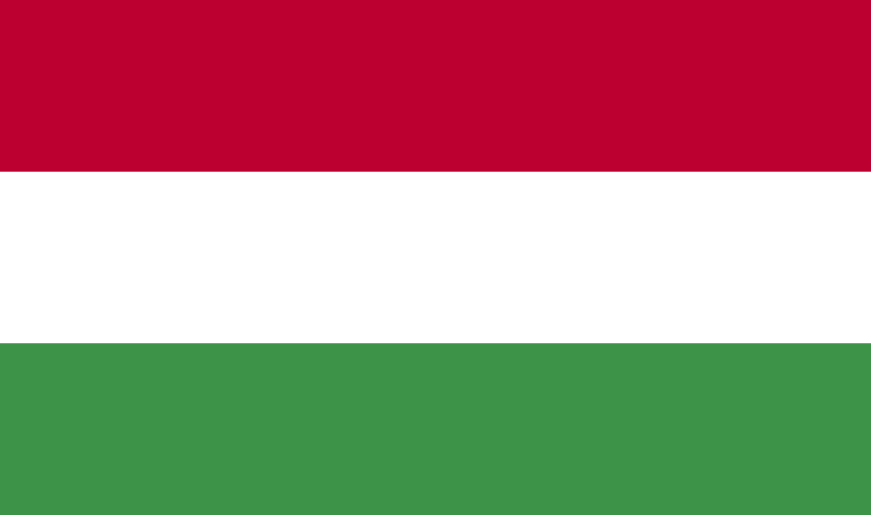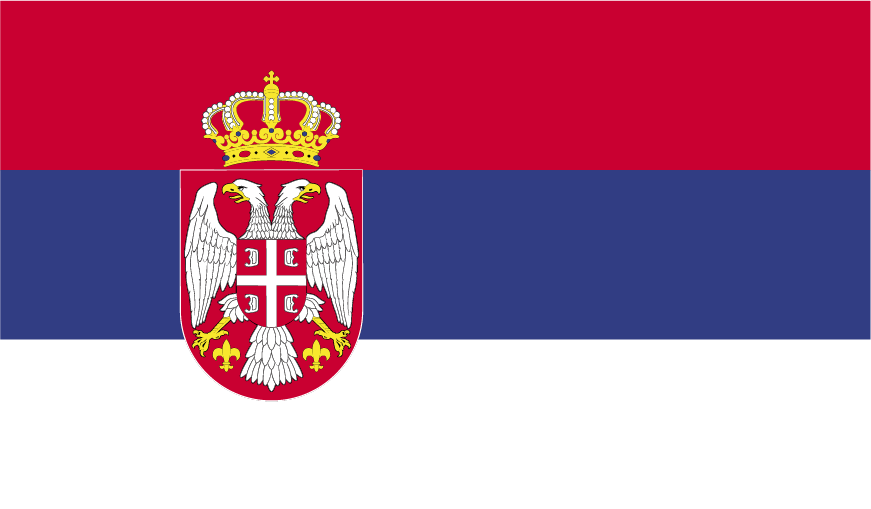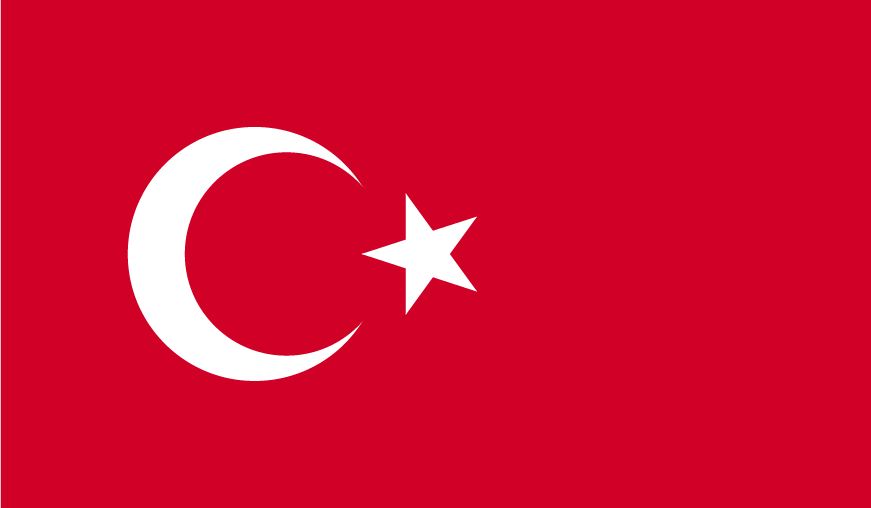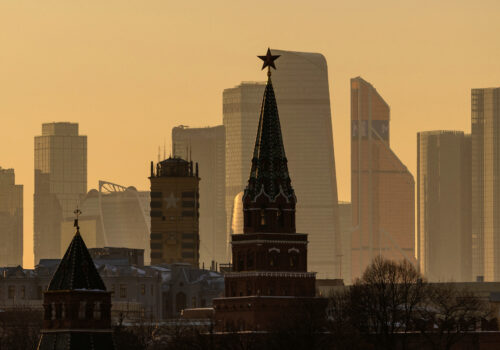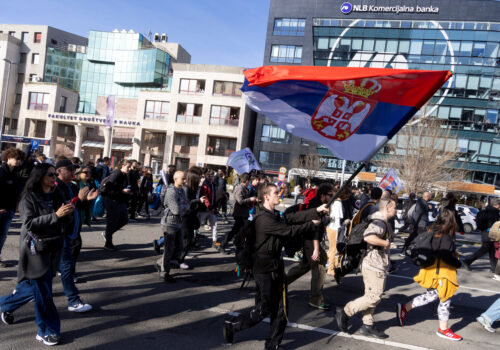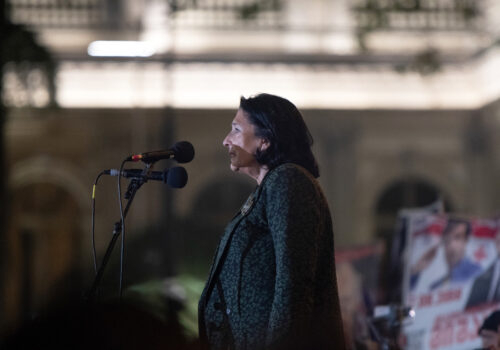Four contests for democracy in Europe challenge the narrative of advancing authoritarianism
Today, we are bombarded with evidence of rising authoritarianism and retreating liberal democracy, from Russian aggression in Europe to the democratic decline and degradation recently documented by Freedom House and the Economist Intelligence Unit. These twin trends are real and reshaping global affairs. But they do not tell the full story. Consider events that have been unfolding over the past weeks and months in countries in and around Europe, where large and in several cases sustained pro-democracy demonstrations have put some authoritarian regimes on the defensive.
Before zooming in on these storylines, it’s useful to zoom out on the broader sweep of history: For two centuries, Europe has advanced toward liberal democracy in uneven cycles: in 1848, a wave of mostly unsuccessful liberal and patriotic revolts; in 1918, the establishment of mostly liberal-democratic successors to the fallen Russian and Austro-Hungarian empires in Central and Eastern Europe; in the 1920s and 1930s, a surge of authoritarian and fascist takeovers; after 1945, democratic restoration in Western Europe under Pax Americana and Soviet imposition of communism in Central and Eastern Europe; and in 1989-91, a series of mostly successful liberal and patriotic revolts in Central and Eastern Europe. The twenty-first century has featured the ascent of nationalist, populist, and illiberal politics in Western Europe along with authoritarian and illiberal challenges or regression in Central and Eastern Europe.
These contemporary trends are on display in Hungary and Serbia, with the latter locked in a conflict between nationalism and liberal democracy since the violent breakup of Yugoslavia in the early 1990s. Further east, in Turkey, the democratic opening and economic success that marked the early years of the AK Party’s rule have since steadily eroded. While nearby Georgia experienced a wave of economic and some democratic reform after the popular Rose Revolution in 2003, it has gradually slid into authoritarianism under Georgian Dream after the party was democratically elected in 2012.
Now, however, pro-democracy demonstrators are turning out in big numbers in Budapest, Belgrade, Istanbul, and Tbilisi. The specific grievances propelling people to the streets vary, but all challenge political authoritarianism and cronyism. So far, these protests have not resulted in any changes of regime—and they may never do so. But, if nothing else, the upsurge of democratic action in the face of threats and repression challenges and complicates the dark narrative that authoritarianism is inexorably on the march across Europe.
Below are closer looks at how these consequential contests for democracy are playing out, drawing on assessments that knowledgeable observers connected with these countries shared with me.
Tbilisi, Georgia
For nearly one hundred and fifty days, Georgians have taken to the streets in protest, resisting an authoritarian system imposed on them through Russian-backed state capture and information and electoral manipulation.
The ruling Georgian Dream party, led by Georgian businessman Bidzina Ivanishvili—whom the United States has sanctioned under an executive order targeting Kremlin agents—was initially freely elected but has spent the past decade consolidating power over all branches of government and aiming to do the same with independent media and civil society, squandering a democratic mandate in favor of raw power. A “foreign agents” law, modeled after Russian legislation, has been revived to brand Western-funded nongovernmental organizations and independent media as enemies of the state and force them out of public life. US-sanctioned Chinese surveillance tools track demonstrators with precision yet somehow fail to identify the police officers and men in black uniforms who abduct, beat, and torture protesters and reporters. Independent journalists and civic activists are jailed on politically motivated charges. Repressive laws are mounting, designed to silence dissent and tighten the regime’s grip. What was once a slow erosion of democratic space has become a galloping assault on it.
Civil resistance began slowly, in the aftermath of parliamentary elections in October 2024 that were criticized by international observers. The Organization for Security and Co-operation in Europe, for example, noted “serious concerns” about “the independence of institutions involved in the election process and pressure on voters.” That resistance surged after Georgian Dream announced in late November that it intended to abandon Georgia’s path toward European Union (EU) membership, a goal that is supported by more than 80 percent of the population and enshrined in the Georgian constitution. Resistance was not partisan but civilizational, as it was in Ukraine in 2014: a movement for a European, not a post-Soviet, future.
In Tbilisi and across the country, public servants, artists, educators, business owners, and students joined forces in a show of unity rarely achieved in the country’s modern history. Even ambassadors have resigned in protest. Despite the government raising fines—now set well above the average monthly salary—threatening livelihoods, and weaponizing the legal system, the protesters remain undeterred week after week. They are demanding new elections, the release of political prisoners, and a commitment to seek a European future.
One Georgian sympathetic to the demonstrators put the stakes this way: “For over a decade, Georgia’s ruling party cloaked itself in pro-Western rhetoric, masking a steady drift toward illiberalism. But after Russia’s full-scale invasion of Ukraine, the mask slipped. The allegiances of the current regime in Tbilisi lie elsewhere: openly aligned with Moscow, increasingly tied to Beijing, and comfortably situated within a growing authoritarian bloc that seeks to discredit liberal democracy, declare it obsolete, and replace it with a new world order shaped in its image.”
Budapest, Hungary
Hungarian Prime Minister Viktor Orbán and his Fidesz Party have consolidated power and defeated rivals since he assumed power for a second time in 2010. Orbán has emerged as a leading advocate of “illiberal democracy” (he helped coin the phrase), attracting ideological sympathizers, especially from the United States. His governance has included cultural conservatism and emphasis on what Fidesz terms traditional values; rhetorical hostility toward the European Union, notwithstanding the substantial EU funding Hungary receives; authoritarian political evolution; and flirtation with Russia. Some of this political agenda has significant support in Hungary, but credible charges of corruption and economic stagnation have begun to change that picture.
Displaying a desire for change, hundreds of thousands of Hungarians attended a March 15 National Day event organized by the main opposition right-of-center party, the Tisztelet és Szabadság Párt (Respect and Freedom Party), which is abbreviated as Tisza. The demonstrations have continued in the weeks since, even as protesters face increasingly frequent and aggressive attacks.
Tisza is a comet in the Hungarian political landscape. Founded just a year ago, it is led by Peter Magyar, a former Fidesz member who resigned from his government post in protest in February 2024, accusing the ruling party of corruption. Now a fierce critic of Orbán and Fidesz, Magyar is targeting state-level corruption, the poor performance of the economy, and the government’s dismantling of the pillars of democracy. The demonstrations and strong showing by Tisza have occurred despite Orbán’s control of the national media, a smear campaign unleashed against Magyar, and the increasingly threatening and toxic environment in which the Hungarian opposition operates.
Orbán appears worried about upcoming national elections in 2026. His speech during National Day on March 15 was perhaps the ugliest address he’s ever delivered. He called for an Easter “clean-up” and labeled his opponents “bed bugs”—echoing, to Hungarians’ ears, Hungarian fascist speeches from the 1930s and 1940s. His rubber-stamp parliament has further restricted laws governing free assembly. On March 19, it banned LGBTQI+ pride marches. With the tanking of the economy and the highest inflation rate in the EU, Hungary’s political winds may be shifting.
In describing the change afoot in his native country, a veteran of Hungary’s successful democratic dissident movement in the 1980s relayed an anecdote. As he walked by a group of Tisza supporters gathering for a demonstration in Budapest, he said, “Go, Tisza, go.” In an apparent allusion to Tisza’s other meaning as the name of the second-largest river in Hungary, they responded, “We are flooding. We are flooding.”
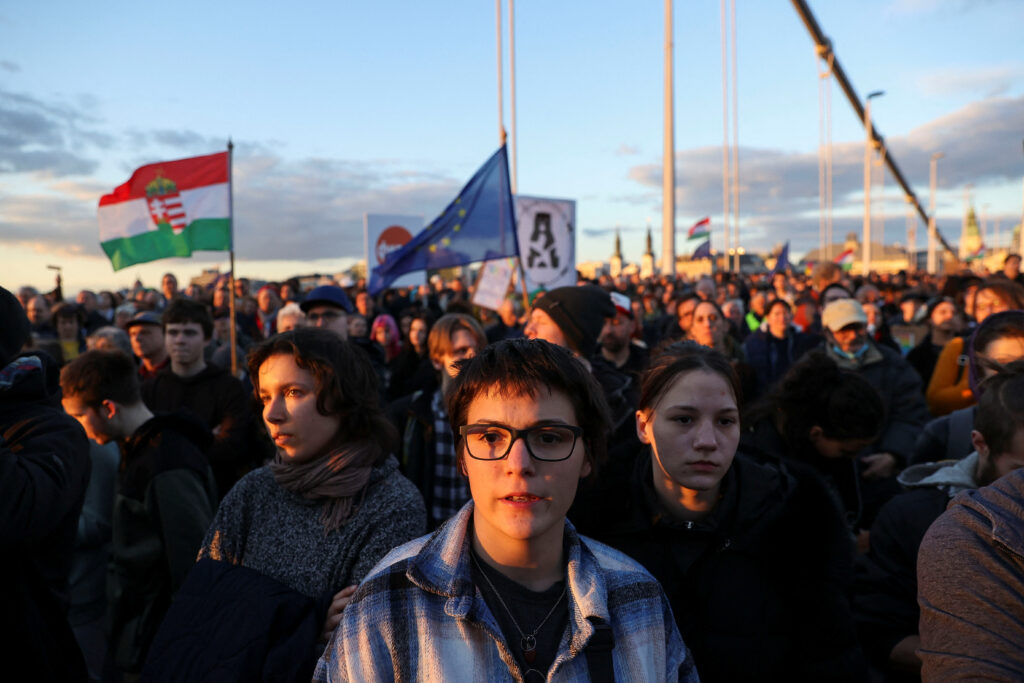
Belgrade, Serbia
Protests in Serbia have been ongoing for more than five months. They were sparked by a tragedy on November 1, 2024, when the canopy of a newly renovated train station in the northern city of Novi Sad collapsed, killing fifteen people. The cause of the disaster was corruption; the project was vastly overpriced, and the building was opened without the necessary permits.
Unlike many protests in the past, the demonstrations across Serbia today are led by students with no formal or singular leader, making them difficult for the authorities to control. The demonstrators’ main demand is not a change of government but the enforcement of the law. They want the government to investigate corruption and the hold those responsible for it accountable.
Serbia has one of the most acute brain drains in Europe. It ranks among the top countries for youth emigration, especially in information technology, medicine, and engineering. However, students from state universities who are participating in these protests consistently emphasize that they do not want to leave Serbia. Instead, they explain that they want to stay and live in a normal, free country where institutions do their job, where young people can build a future without political interference, and where democratic principles are respected.
Serbian President Aleksandar Vučić, whose roots are in Serbian nationalist politics, has dismissed the accusations against the government, claiming that protesters’ demands have already been met after officials published thousands of documents related to the construction of the Novi Sad train station, prosecutors placed more than a dozen people in custody over the canopy collapse, and Prime Minister Miloš Vučević stepped down in January. With the media largely under government influence, students have resorted to unconventional methods to express their views. They have walked across Serbia to personally spread their message, culminating in the largest protest in the country’s history, with an estimated 325,000 participants, on March 15.
Despite the peaceful nature of the March 15 protests, during the fifteen minutes of silence in honor of the victims of the Novi Sad disaster, authorities appear to have used a sonic weapon, or long-range acoustic device—a nonlethal device that emits high-intensity sound waves to cause disorientation and pain. As a result, hundreds of people reportedly required medical assistance. Initially, the government denied possessing such a weapon, but evidence later surfaced that it had purchased the device, and multiple photos appear to show it on a police jeep parked in front of the National Assembly on the day of the protest. Many Serbians believe that the intent was to provoke chaos, giving the government a pretext for imposing a state of emergency.
What comes next? Possible scenarios include a general strike to increase pressure on the government to form a transitional or expert government, with a mandate limited to six to twelve months. This approach might fulfill the students’ demands and ensure the holding of free and fair elections, or it could lead instead to increased state repression. As a Serbian observer put it, “Vučić is balancing between crackdowns and electoral manipulation, but one thing is clear: Students—strongly supported by university professors and deans, high school teachers, farmers, and many other Serbian citizens—have emerged as a crucial political force, determined to persist in their fight for justice.”
Istanbul, Turkey
The jailing on March 19 of Istanbul Mayor Ekrem İmamoğlu, who is seen as the main rival to President Recep Tayyip Erdoğan, set off nationwide demonstrations under the slogan “Right, Law, Justice” despite a temporary ban on gatherings. These are the largest protests in the country since the 2013 Gezi Park protests.
Prior to İmamoğlu’s jailing, the main political opposition in the country, the Republican People’s Party (CHP), was preparing to hold primaries to elect its presidential candidate for the 2028 elections amid speculation about a potential early election. İmamoğlu was expected to be elected as the CHP’s presidential candidate, given his popularity across the political spectrum. İmamoğlu has won the Istanbul mayorship—often considered a key indicator of national political trends (Erdogan himself was once Istanbul’s mayor)—three times: first in 2019, with the elections then repeated due to alleged irregularities, and most recently in 2024.
On March 18, only five days before the CHP primaries, İmamoğlu’s university nullified his bachelor’s degree, citing alleged irregularities. Since a bachelor’s degree is a requirement for the presidency in Turkey, the move has jeopardized İmamoğlu’s candidacy. The next day, on March 19, İmamoğlu was detained in an investigation over corruption and support for terrorist organizations. His detention sparked widespread protests across the country, with many viewing it as politically motivated. Despite the protests, the Turkish courts officially ordered İmamoğlu’s arrest for corruption charges on March 23. On the same day, the CHP held its primaries for official party members as scheduled, with an additional invitation extended to all Turkish citizens to vote in symbolic “support” ballot boxes. While İmamoğlu was being transferred to Silivri Prison—notorious for holding individuals accused of political crimes—more than fifteen million Turks voted for him to be the next opposition presidential candidate.
In the weeks since, Saraçhane district, where the İstanbul town hall is located, has been the scene of protests and nightly condemnation speeches by CHP leader Özgür Özel. Drone footage shows hundreds of thousands of people in and around the square, with more protesters also converging around other municipal buildings. Many nights at 8:00 p.m., the sounds of pans, whistles, car horns, and shouts of protest slogans rise in Istanbul and other major cities.
Across Turkey, university students are at the forefront of the protests, joined by members of parliament and bar associations. The demonstrations start peacefully but often escalate through the night into violent confrontations with the police, with widespread use of rubber bullets, pepper gas, and water cannons. At least 1,900 people have reportedly been detained, including students, academics, lawyers, and journalists. The social media platform X initially deactivated opposition accounts. After facing backlash from international media, however, it issued a statement condemning the pressure it received from Turkish courts.
While the street protests have mostly calmed down following the Eid holidays, a broader economic boycott called by the CHP continues. Many Turks are avoiding some major media outlets, bookstores, coffeeshops, bus companies, and furniture brands for either failing to cover the protests, mistreating the demonstrators, or generally being perceived as close to government figures.
Since March 19, a broad segment of Turkish society has taken to the streets and to social media to express a growing concern that the democratic will of the people is under threat. Turkish observers shared that many Turks view what happened to İmamoğlu as a tipping point, reinforcing longstanding apprehension about the gradual erosion of democratic values in the Turkish Republic.
***
These are ongoing, unfinished storylines that have produced no definitive results so far. Popular protest can rise and fall. Democratic dissent fails more often than it succeeds. Authorities have the guns and thus the advantage on any given day. New forms of information manipulation may give an additional edge to incumbent authoritarian regimes.
And yet, the dissidents of the Baltic states, Czechoslovakia, Hungary, and Poland’s Solidarity movement were all written off by Western experts in and out of government, who urged “realism” and resignation. As it turned out, pro-democracy movements can, sometimes, bend the arc of history despite the odds and the skeptics. Talk of the irresistible rise of authoritarianism may be premature.
Daniel Fried is the Weiser Family distinguished fellow at the Atlantic Council. He is also on the board of directors of the National Endowment for Democracy and a visiting professor at Warsaw University. Fried served for forty years in the US Foreign Service. He is a former US ambassador to Poland, assistant secretary of state for Europe, and coordinator of sanctions policy. Follow him on X @AmbDanFried.
Further reading
Wed, Mar 26, 2025
There’s a right way to lift sanctions on Russia. Follow these Dos and Don’ts.
New Atlanticist By Daniel Fried, Kimberly Donovan
A former US diplomat and a former US Treasury official offer eleven guiding principles for moving forward in negotiations on sanctions relief with Russia.
Tue, Feb 4, 2025
Fearmongering from Western Balkan leaders is no longer working on their citizens—or the EU
New Atlanticist By
The European Union has ample leverage to press its concerns on reforms, Russia policy, and regional stability to Western Balkan countries.
Wed, Jan 22, 2025
What Georgia needs most from the West right now, according to President Salome Zourabichvili
New Atlanticist By Katherine Golden
“Georgia needs today, more than ever, the attention of its American friends,” Zourabichvili said at an Atlantic Council Front Page event.
Image: Students and anti-government demonstrators hold fifteen minutes of silence, with the flashlights of their mobile phones on, for the victims of the deadly November 2024 Novi Sad railway station roof collapse during a protest, which has become a national movement for change following the deadly Novi Sad incident, in Belgrade, Serbia, March 15, 2025. REUTERS/Mitar Mitrovic/File Photo

